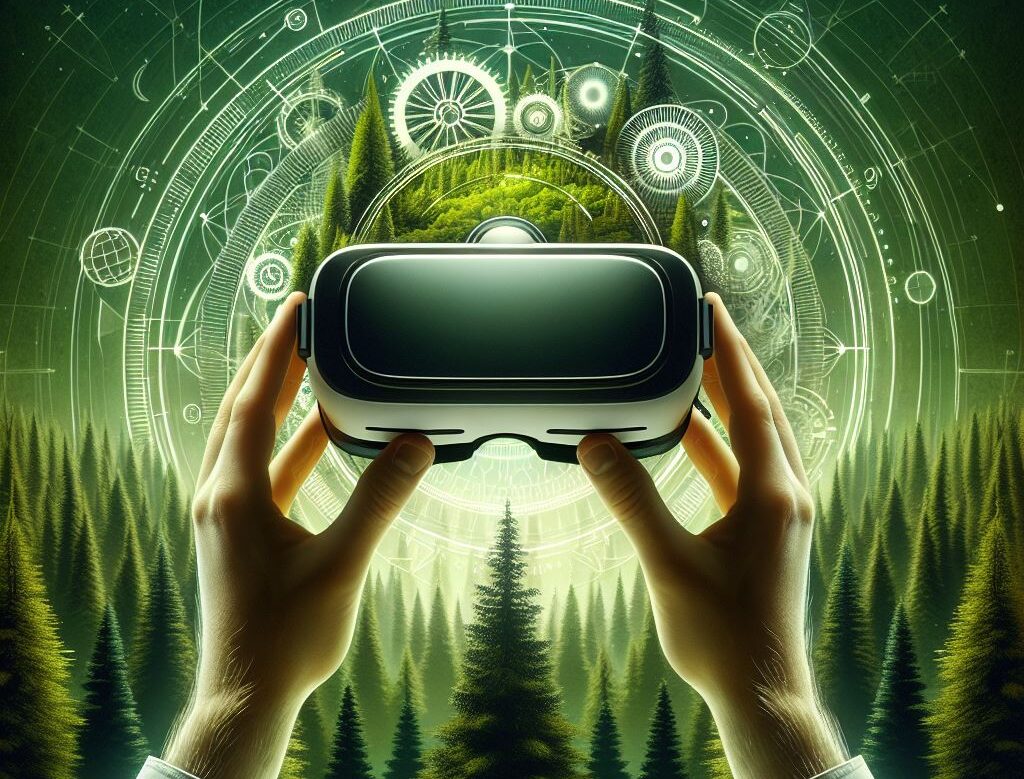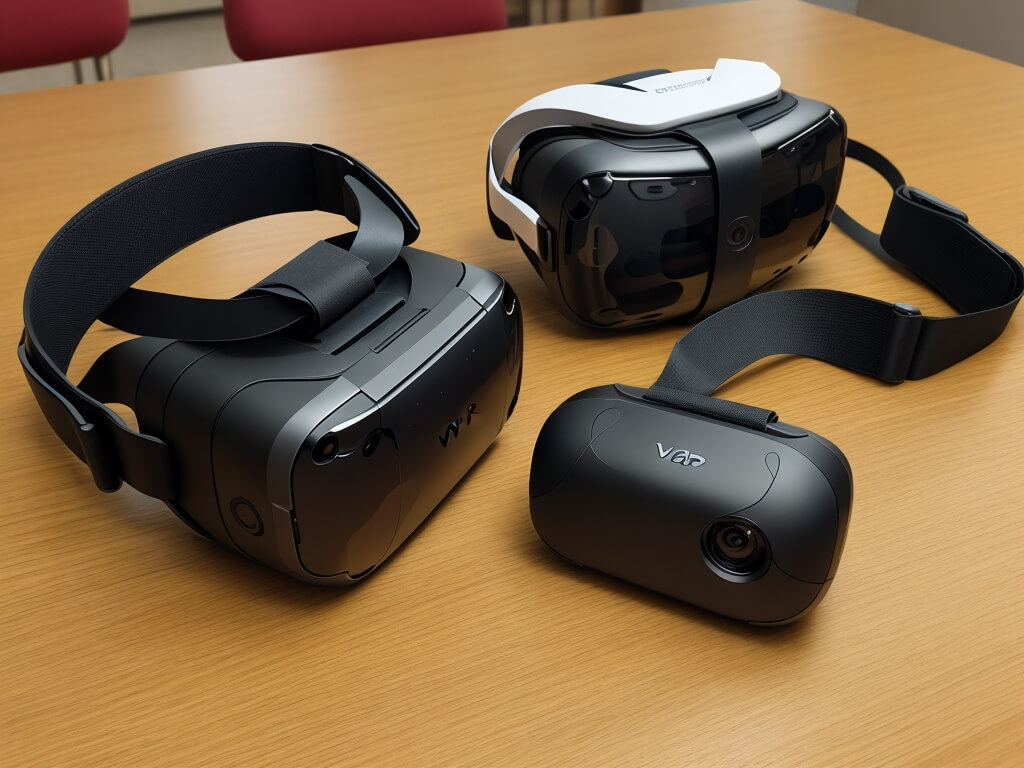
Technology continues to break barriers and redefine traditional learning experiences. One such revolutionizing force is the integration of Augmented Reality (AR) and Virtual Reality (VR) into the realm of renewable energy education.
These transformative technologies hold the unique ability to propel students beyond the confines of a traditional learning environment, catapulting them into the heart of renewable energy projects.
AR and VR provide immersive experiences that make learners feel as though they are physically present in these settings. This shift from theoretical concepts to hands-on exploration is a dynamic and crucial aspect of education.
As students virtually explore the intricacies of solar energy harvesting or the mechanics behind hydroelectric power, their comprehension deepens, and curiosity is sparked. This experiential learning makes educational content more engaging and fosters a tangible connection between students and the fascinating world of renewable energy. AR and VR redefine the learning landscape, turning it into an interactive journey that goes far beyond the limitations of a traditional classroom setting.
Interactive Learning Adventures
Education is evolving beyond the limitations of textbooks and lectures, and the realm of interactive learning adventures powered by Augmented Reality (AR) and Virtual Reality (VR) is at the forefront of this revolution. With AR, students transcend the two-dimensional confines of traditional learning materials; they engage with 3D models of solar panels, virtually dissecting each component to gain a comprehensive understanding of how sunlight is converted into electricity.
Similarly, the immersive experience provided by VR allows students to step into the shoes of engineers navigating the complexities of a virtual wind farm. This hands-on, interactive approach goes beyond theoretical knowledge, providing a simulated environment where learners can troubleshoot issues and grapple with real-world challenges faced by professionals in the field of renewable energy.
Real-world Simulations
The allure of Augmented Reality (AR) and Virtual Reality (VR) extends to their remarkable capacity to replicate real-world scenarios, bringing a new dimension to the learning experience. Students are not limited to theoretical discussions, they can immerse themselves in lifelike simulations that mirror the challenges encountered by professionals in the renewable energy sector.
Learners can actively engage in scenarios like optimizing the placement of solar panels or managing fluctuations in wind speed. These real-world simulations offer practical experience, allowing students to apply theoretical knowledge in a hands-on manner. By navigating through scenarios that mimic the complexities of the renewable energy industry, students bridge the gap between classroom theory and real-world application.
The beauty of these simulations lies in their ability to provide a risk-free space for experimentation and learning. Mistakes made in the virtual realm become valuable lessons, preparing students for the intricacies they may encounter in the actual field. AR and VR, with their capacity for realistic simulations, play a pivotal role in shaping a new generation of professionals who are equipped with the practical skills needed to navigate the challenges of renewable energy.
Visualizing Environmental Impact
Augmented Reality (AR) and Virtual Reality (VR) play a transformative role in fostering a deep understanding of the environmental impact of energy choices. Beyond the mechanics of power generation, these technologies empower students to visually explore and comprehend the broader consequences of embracing sustainable energy sources.
Through AR and VR, students can virtually witness and analyze the tangible outcomes of different energy choices. They observe firsthand the reduction in carbon emissions, the preservation of ecosystems, and the overall positive effects that come with adopting sustainable energy practices.
This visual narrative goes beyond traditional teaching methods, providing a visceral experience that resonates on a personal level. As students virtually witness the positive environmental effects of renewable energy, a profound sense of responsibility and environmental consciousness is instilled. This contributes to the development of a generation of individuals who are deeply committed to making environmentally conscious choices in the pursuit of a sustainable future.
Customized Learning Paths
Recognizing the diverse pace at which students absorb information, Augmented Reality (AR) and Virtual Reality (VR) have emerged as champions of personalized learning in the realm of renewable energy education. In contrast to the one-size-fits-all approach, these technologies offer a tailored educational experience, allowing individuals to delve into renewable energy concepts at a rhythm that aligns with their unique learning style.
AR and VR present a dynamic learning environment where students can choose their paths, exploring concepts in a manner that suits them best. Be it through gamified modules or interactive quizzes, these technologies adapt to the specific needs of each learner, fostering a sense of inclusivity and engagement that transcends traditional teaching methods.
The gamification aspect adds an element of fun and competition, making the learning process enjoyable. Students can navigate through modules that align with their interests and strengths, enhancing comprehension and retention. This personalized learning approach not only accommodates diverse learning styles but also ensures that education becomes a dynamic, interactive, and truly individualized journey for each student.
Collaborative Learning Environments
Augmented Reality (AR) and Virtual Reality (VR) serve as catalysts for collaborative learning, transcending geographical boundaries and bringing students together in virtual spaces. This innovative approach enables students from diverse corners of the globe to unite and collaborate within a shared virtual environment, actively engaging in collaborative projects centered around renewable energy.
The collaborative potential of AR and VR is a game-changer, offering a unique platform for students to pool their insights, expertise, and cultural perspectives. This collective effort goes beyond traditional classroom interactions, enriching their understanding of renewable energy concepts through a fusion of diverse viewpoints and collaborative problem-solving.
This collaborative learning environment isn’t just a simulated experience; it mirrors the global teamwork prevalent in the renewable energy sector. As students collaborate virtually, they gain valuable insights into the dynamics of working with individuals from different backgrounds – a skill set highly relevant in the professional world. This firsthand experience in collaborative problem-solving prepares them for the interconnected, global landscape of the renewable energy industry, setting the stage for a future where teamwork knows no borders.
Inspiring the Next Generation
The integration of Augmented Reality (AR) and Virtual Reality (VR) into renewable energy studies it’s a powerful catalyst for inspiring the next generation of environmental stewards. These cutting-edge technologies make renewable energy education more accessible and engaging, igniting excitement and curiosity in the hearts and minds of students.
The virtual classroom becomes a dynamic space where students are passive recipients of information and participants in their educational journey. As they virtually explore renewable energy concepts using AR and VR, a spark is lit – a spark that has the potential to transcend the virtual realm and manifest as real-world innovation, research, and solutions to the pressing environmental challenges our planet faces.
The immersive experiences provided by AR and VR create a palpable connection between students and the vital issues surrounding renewable energy. This heightened awareness, coupled with the sense of empowerment that comes from hands-on learning, lays the foundation for a generation eager to tackle environmental problems head-on. In this way, AR and VR become more than educational tools, they emerge as inspirational forces shaping the future by nurturing a cohort of individuals ready to make a tangible, positive impact on the sustainability of our planet.

